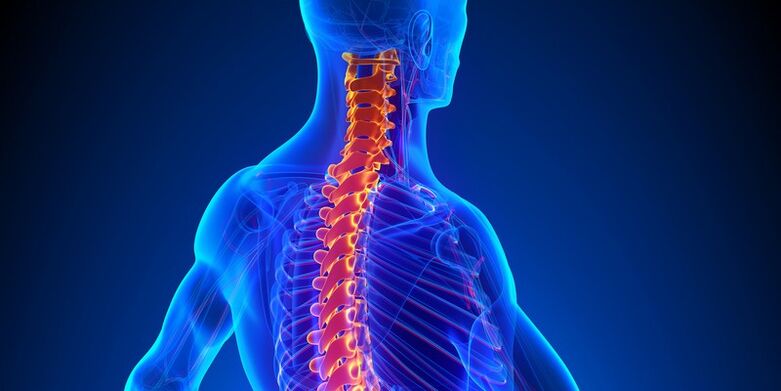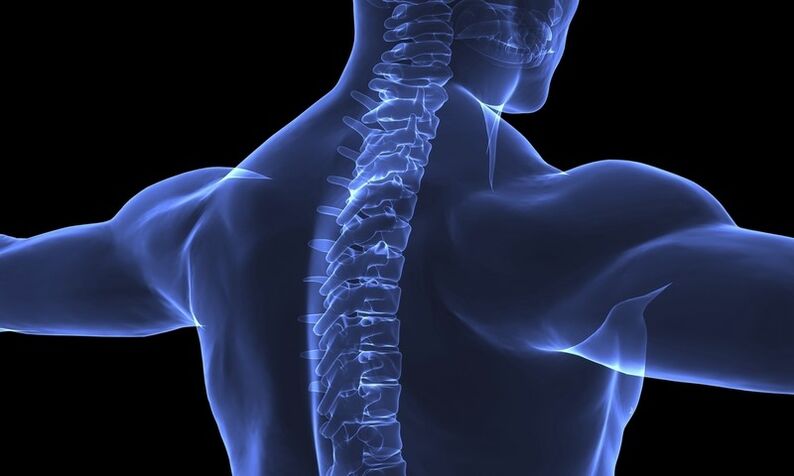If you are worried about pain in the neck, and you still have not gone to the doctor, you need to know the dangers of cervical osteochondrosis, what are the consequences of which can be fatal. Awareness of danger must motivate you to take action.
Cervical osteochondrosis is considered one of the most dangerous spinal lesions, as a large number of important ducts and arteries and capillaries are concentrated in the neck area. That is why among the unpleasant consequences of this disease are vegetative-vascular dystonia, hypertension, oxygen starvation, etc.
Cervical osteochondrosis can not go unnoticed, because in most cases it is accompanied by severe pain, obvious symptoms. Pain syndrome is an indication that the work of the whole organism is disturbed. If you ignore these signs, then the results can be catastrophic, ranging from irreversible damage to the spine and to death.

After reviewing the information below, you will see that the consequences of cervical osteochondrosis are really serious, which means that you should not delay complex treatment entirely.
General clinical picture
Violations of the cervical spine affect its lower segment, which is related to physiological characteristics and lifestyle. If you feel pain in the neck, shoulders, head, this indicates degenerative changes in these areas, pinched nerves, muscle spasms or compression of the vertebral arteries.
Cervical osteochondrosis affects the segments of the spine that are responsible for the function of the shoulder and elbow joints, thyroid gland, hands, esophagus and trachea. The most common symptoms include pain in this part of the body, hypothyroidism, seizures, numbness in the face and hands, cough, and difficulty swallowing.
At the beginning of the disease, there are complaints of persistent headache, fatigue, impaired hearing and vision, dizziness, fainting. Naturally, in parallel with this, there is always a sharp or pulling pain in the neck and shoulders. It is important at this stage of the disease to visit a doctor, make a diagnosis and begin treatment, which includes the intake of special medications and physiotherapy, manual therapy for osteochondrosis of the cervical spine.
Otherwise, the disease will move to the next level, complications of cervical osteochondrosis will begin, which is very difficult, if not impossible, to defeat.
Spinal lesions
If a nerve is pinched by a vertebral disc in the spinal space at any site, then a hernia and protrusion occur. This pathology is chronic, sometimes exacerbated, then subsides.If the attack of sharp pain passes and does not bother even for a few weeks, this does not mean that the disease has healed and everything goes away on its own. "Self" can not pass, the treatment of protrusion, and then the hernia, requires complex treatment for several months, or even years.
A herniated disc immediately requires vertebral body bone growth, salt deposition, and sclerotic plaque in the vessel. In addition, the danger comes from infected vertebral arteries, which are unable to fully transport oxygen and nutrients to the brain, inner ear, and upper spinal cord. Oxygen starvation occurs, which causes dizziness, loss of consciousness, and constant fatigue. The pituitary gland suffers, there is a disturbance in the work of the hypothalamus, the process of breathing and swallowing becomes difficult.
The work of the heart becomes difficult, it begins to work faster, the rhythm increases, blood pressure rises automatically, and this, in turn, affects the ducts.
Violation of the vegetative-vascular system
Medications - analgesics, antispasmodics, painkillers, etc. - without parallel physical activity, therapeutic massage, will relieve pain and other symptoms, but only for a short time. The body will quickly get used to the active ingredient, stop reacting to it, the disease will return, and symptoms will increase at certain times.

This threatens with vegetative -vascular dystonia - what is most dangerous for osteochondrosis of the cervical spine. As a result of compression of the vertebral arteries, which provide a third of the nutrition of the brain and other vital organs, the whole body suffers.
By the way, many doctors do not consider vegetative-vascular dystonia as an independent disease. Experts are convinced that this is only the result of violations of other systems. And osteochondrosis of the cervical spine is often a major "provocateur" of cardiovascular disease.
First of all, the vasomotor center, which is responsible for regulating vital functions, normal heart function and blood pressure, suffers. As a result of the lack of normal blood circulation in the upper body, a person feels numbness in his hands, realizes difficulty in breathing and swallowing. Deterioration of motor skills, possible disorientation in space, frequent fainting, "satiety" in the head.
Because of poor blood flow, the heart tries to make up for the "deficiency", and therefore begins to work faster and faster.Because of this, blood pressure rises, heart rate rises, and tachycardia begins.After a long acceleration, the heart muscle is stretched.
Compression of blood vessels and the spread of complications to the spine near the neck cause dysfunction of many internal organs. In particular, the adrenal glands work too much and release the hormone cortisol beyond the norm.
Over time, the disease will continue. Tachycardia, nerve disorders, as well as hypertension and hypotension will bother someone who has developed cervical osteochondrosis.
Hypertension and hypotension
Another dangerous thing about cervical osteochondrosis is the provocation of hypertension, one of the most devastating diseases. At first, it passes completely unnoticed by a person, with no visible symptoms. Unfortunately, neck pain is rarely associated with hypertension. Without proper treatment, the disease can develop into coronary heart disease, cause myocardial infarction, and lead to stroke. As you know, deaths caused by cardiovascular disease rank first in the world.
Regarding hypotension, the patient cannot immediately lose his life, but gives rise to very unpleasant symptoms.
Hypotension is oxygen starvation caused by inadequate nutrition of the brain, cerebellum, and inner ear. Because the brain receives little oxygen and other nutrients, the brain is unable to ensure full bodily function.A person lacks vital energy, he feels weak, chronic fatigue, nausea, drowsiness.Naturally, he was always in a bad mood, his performance declined. In the long run, there is a deterioration of memory, vision and hearing, loss of concentration.
One of the most striking consequences of cervical osteochondrosis and the hypotension caused by it is the so -called drop syndrome - unexpected fainting, and one of the most common - headaches and disorders of the nervous system.
Headaches and nervous system disorders
What if you don’t have the flu, an acute respiratory infection, your blood pressure is normal, but you still have a persistent headache? It is very possible that this is a consequence of cervical osteochondrosis. Nerves are pinched, blood vessels are pinched, blood is not supplied to the brain in the required amount, the result is pain and dizziness, throbbing in the temples, pressing in the occipital area.
In a situation like this, it is difficult to continue to carry out your duties with high quality, in a good mood, to concentrate, and to play sports. If you prefer to swallow pills from the head, painkillers, and do not go to the doctor and do a full examination, then you run the risk of developing this disease and giving you serious disorders of all body systems, including the nervous ones.
Depression, panic, apathy, irritability, aggressiveness - these are all indications of a violation of the functioning of the human nervous system.
If the disease has progressed to a later stage, restricting your movements, restricting life activities, causing constant pain, and you persist for this long, then the appearance of neurosis is a natural symptom. In addition, if cervical osteochondrosis is not treated, certain syndromes associated with dysfunction of certain organs can develop.
Syndrome
Osteochondrosis of the cervical spine can cause the following unpleasant syndromes:
- Vestibular trunk syndrome - spoils a person’s life and causes a lot of trouble. The main symptoms include disorientation in space, loss of hearing and vision, and fainting. The hands may not be attached, weakness in the feet will appear.
- Due to the fact that the vestibular apparatus is unable to function normally, cochlear syndrome may occur - it will make a noise in the ears, become dark in the eyes.
- Laryngeal syndrome sometimes occurs. Then it is difficult for the patient to swallow, there seems to be a lump in the throat, his voice becomes calmer and rougher.
The list of consequences of cervical osteochondrosis does not end there. The above are the main things that lead to this dangerous disease. Remember that at the first complaint and suspicion that you have a disease of the spine, contact a specialist.
He or she will perform an examination, devise an individual treatment.This is the only way to avoid the adverse consequences of cervical osteochondrosis, which is described in the article.If you are healthy and the disease does not affect you, then do not forget the preventive measures to stay healthy in the future.

























